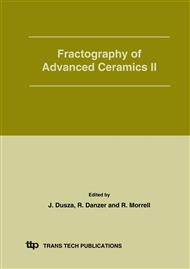p.260
p.264
p.268
p.272
p.276
p.280
p.284
p.288
p.292
A Contribution of Fractal Geometry to Characterization of Wear Process
Abstract:
Irregular evolution of friction coefficient, recorded during the ball-on-disc test on Si3N4 based ceramic materials, was analysed by means of fractal geometry methods. Tests were carried out at room temperature, in air and without any lubricant. It was proven that the friction coefficient trace, considered as a geometric object, has the property of a fractal curve. The fractal dimension of this curve increased with increasing wear rate measured in a corresponding wear test. This could indicate the possible correlation between the wear rate and the fractal dimension of friction coefficient as a function of sliding distance (time).
Info:
Periodical:
Pages:
276-279
Citation:
Online since:
July 2005
Authors:
Price:
Сopyright:
© 2005 Trans Tech Publications Ltd. All Rights Reserved
Share:
Citation:


